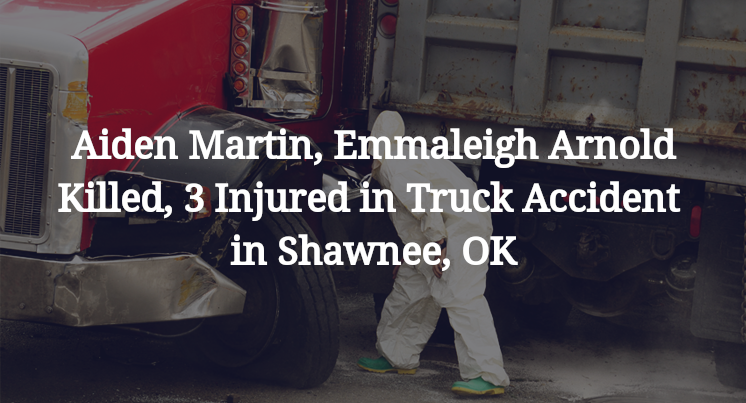Aiden Martin, Emmaleigh Arnold Killed, 3 Injured in Truck Accident in Shawnee, OK
Shawnee, OK — March 21, 2025, Aiden Martin and Emmaleigh Arnold were killed and three people were injured in a truck accident at about 5:45 p.m. on Interstate 40.
Authorities said a semi-truck crashed into a Kia Forte and several other vehicles when it failed to slow for traffic in a construction zone.

Two people in the Kia, passengers, Aiden Martin, 22, and Emmaleigh Arnold, 21, died at the scene of the crash, while the driver and two other people suffered unspecified injuries, according to authorities.
Authorities have not released any additional information about the Pottawatomie County crash. The accident is still under investigation.
Commentary
When a semi-truck plows into vehicles stopped or slowing in a construction zone, the legal issues are not complex: they're urgent. The central question in this crash is: Why didn’t the truck driver stop in time? Because on an interstate like I-40, in a marked construction zone, failing to slow down isn’t just a mistake: it’s a breach of the most basic duty a commercial driver has: to remain in control of their vehicle at all times.
According to initial reports, the truck failed to slow for traffic and crashed into multiple vehicles, including a Kia Forte. Two passengers in that vehicle died at the scene. That’s the kind of outcome that doesn’t happen unless something has gone seriously wrong. Either the driver was inattentive, distracted or following too closely, or they were simply going too fast for the conditions.
Construction zones are high-risk areas where commercial drivers are expected to reduce speed, maintain extra distance and be prepared for sudden changes in traffic flow. These expectations aren’t guidelines: they are legal obligations, reinforced by signage and traffic laws specific to work zones. If the truck driver in this crash failed to meet those expectations, that’s not just negligence:it’s a preventable error with fatal consequences.
Investigators will need to look closely at the truck’s engine control module to confirm speed, braking patterns and throttle input before the crash. They should also examine the driver’s logbooks, route schedule and rest history to determine whether fatigue or pressure to meet delivery deadlines played a role. Cell phone records and dashcam footage, if available, will be equally important in determining whether distraction was a factor.
It’s also worth asking whether the construction zone was properly marked and whether signs and signals were placed at appropriate intervals to warn approaching drivers. That doesn’t excuse a failure to stop, but it’s a necessary part of a thorough investigation.
This crash should never have happened. A construction zone doesn’t create sudden hazards out of nowhere. It’s a known condition that every commercial driver is trained to anticipate. When a truck fails to respond and ends up killing people who were simply moving through the zone as directed, the law is right to demand answers: not just about what happened, but why the systems in place failed to prevent it.
Because at the end of the day, construction zones exist to improve road safety, not to become the site of deadly collisions. And when they do, someone needs to be held accountable.

“These are essential reads for anyone dealing with the aftermath of a truck wreck”– Attorney Cory Carlson